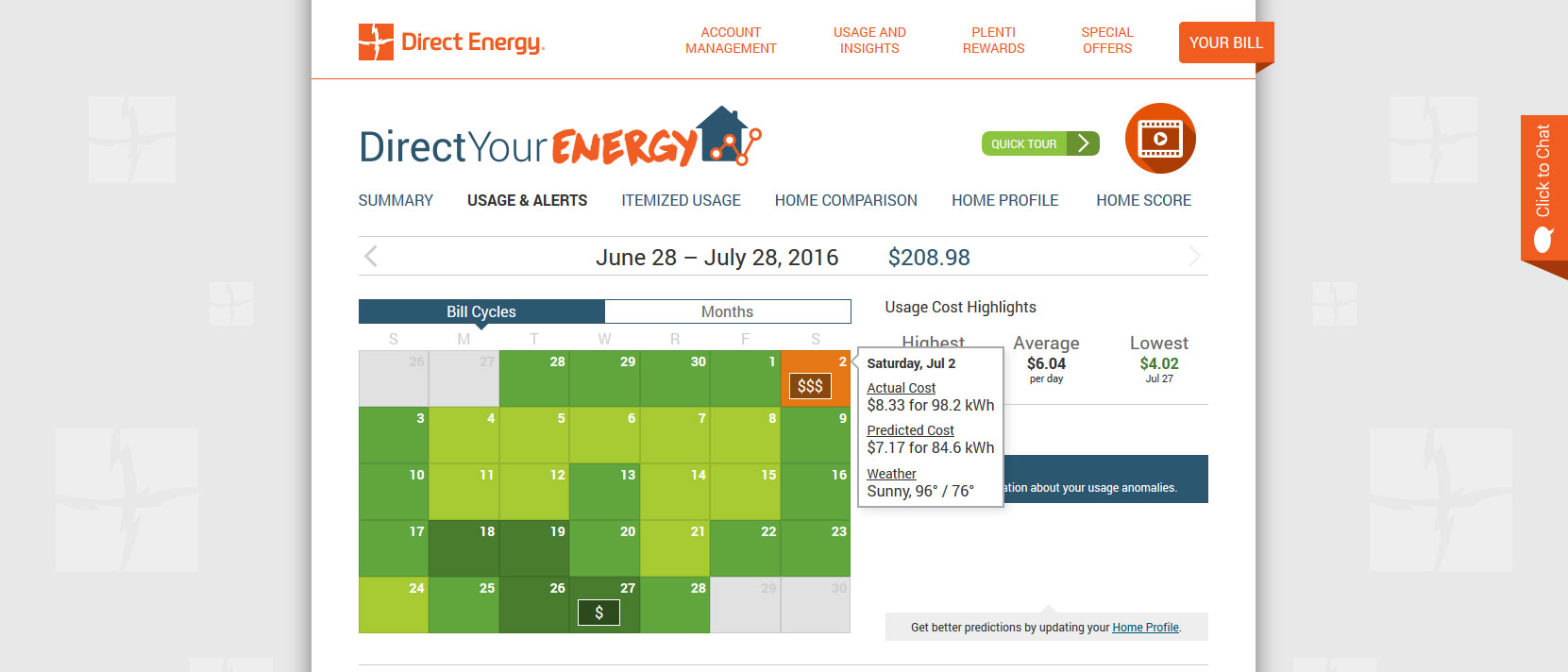The Energy Happy Texas Home: 11 Steps to Save Money and Reduce Your Carbon Footprint
BY Promoted Series Correspondent // 07.10.17Who doesn't want to reduce their carbon footprint and save some green in the process?
This article is part of a promoted series and not produced by the editorial staff.
Whether you’re a millionaire or a coupon king, chances are that you want your carbon footprint to be as small as possible — and the best place to begin embracing efficiency is in your home. How can you ensure that your home or apartment is operating at peak power? It takes some planning — and learned know how. Especially in oft-sweltering Texas.
Take these 10 steps and you’ll have a gameplan for making your home an energy happy place.
Step 1: Consider the switch to Direct Energy
Did you know that Texas homeowners and renters have the power to choose their energy provider? Switching is simple and free, and customers get the benefit of competitive fixed-rate pricing with Direct Energy. The company makes it easy for their customers to use less of what they’re selling with Reduce Your Use Rewards, Direct Your Energy Usage Insights and more.
Step 2: Get smart
Install a programmable smart thermostat to reduce energy consumption when you’re away from home or catching ZZZs. Staying out late or coming home early? Set your thermostat as high as comfortably possible in the summer whether your home or away. The smaller the difference between the indoor and outdoor temperatures, the lower your overall cooling bill will be all year long.
Insider tip: Looking to invest? Leading energy providers are so into this technology that they offer energy plans that include a smart thermostat at no additional charge.
Step 3: Tune up your HVAC
Cooling your home comprises the bulk of your energy bill, so it’s crucial that your HVAC system performs at its best — especially during the hot Houston summer. If routine maintenance and seasonal check-ups with a local HVAC professional don’t keep things running smoothly, it’s time to invest in a new, energy-efficient model.
Pro tip: Look for the Energy Star label.
Step 4: Throw some shade
Blinds and curtains offer more than privacy: They also reduce the amount of sunlight and heat that enter your home through the windows by up to 45 percent. Close the coverings on the sunny side of your home during the day to stay cool. Open the curtains on the shady side to rely on natural light during daylight hours.
Step 5: Landscape responsibly
Who says eco-landscaping can’t be beautiful? A well-considered design can win you “Yard of the Month” and help lower your energy usage. In our hot-humid region, experts recommend that homeowners channel summer breezes toward the home by planting trees on either side of the house; maximize summer shade and winter sunlight by planting deciduous trees to the south; and avoid positioning water-needy planting beds close to the home.
Step 6: Upgrade your windows
Wall-to-wall windows may make for a great view, but they can also be a drain on your home’s energy. Consider replacing single-pane windows with high-efficiency windows to minimize heating, cooling and lighting costs. For homeowners on a budget, simply caulking gaps and cracks can make a big difference in air leakage.
Step 7: Cool down the hot water heater
The average household spends between $400 and $600 each year on water heating. Set the thermostat on your hot water heater between 120°F and 130°F to reduce energy usage by up to 22 percent annually — significantly reducing financial expense along with it.
Step 8: Turn on the fan
The humble ceiling fan may not be able to cool air, but, if properly placed, you can raise the thermostat setting up to 4°F without sacrificing comfort. Plus, it costs just five cents per hour to operate — significantly less than air conditioning.
Step 9: Turn out the light
Lighting accounts for approximately 15 percent of a typical residential utility bill, and you can conserve energy at home by reserving artificial light for the tasks that require it and flipping the switch when a room isn’t in use. Life hack: Replacing your home’s light bulbs with Energy Star bulbs can save up to $80 over the lifetime of each bulb.
Step 10: Go back to basics
Swap a leaf blower for a rake, a commercial-grade juicer for a citrus press, a dryer for a good old-fashioned clothesline. Going back to basics can help you reduce energy usage inside and outside of your home.

Step 11: Save it for the weekend!
Direct Energy offers Free Power Weekends* to all Texas customers. This plan does exactly what it says, you won’t be charged for the electricity supply you use from Friday at 6 pm to 11:59 pm on Sunday. That’s more than 100 days of free electricity, making it the energy plan with the most FREE weekend hours in Texas. With Direct Energy’s Free Power Weekends* plan, customers who have high energy usage activities have the greatest potential to see real savings if they simply shift their activity to the weekend.
*Most free hours weekend electricity claim as of June 19, 2017 when compared to other retail electric providers offers listed on the powertochoose.org website. Subject to change.
















_md.jpeg)













